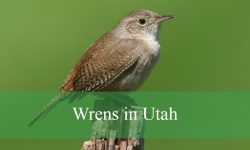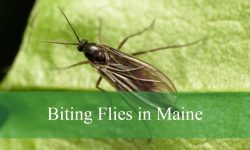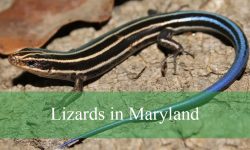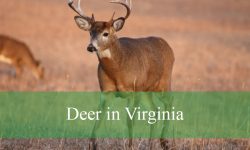South Carolina is home to a rich variety of birdlife, from backyard favorites to striking wetland species. With its mix of coastal plains, forests, swamps, and urban parks, the state provides ideal habitats for many colorful and fascinating birds. Walking through city neighborhoods or exploring wildlife refuges offers plenty of chances to spot interesting feathered visitors.
This guide features 40 birds in South Carolina, complete with identification tips, behavior insights, and habitat details. These species include common residents like the Northern Cardinal and migratory visitors such as the Yellow-rumped Warbler. Each bird plays a unique role in the state’s diverse ecosystems and seasonal changes.
Birdwatching in the Palmetto State offers rewarding experiences throughout the year. Learning to recognize these birds in South Carolina helps deepen your connection with nature and improves your spotting skills. Prepare to discover some of the most beloved and familiar birds across the region.
Common Birds in South Carolina
Northern Cardinal (Cardinalis cardinalis)
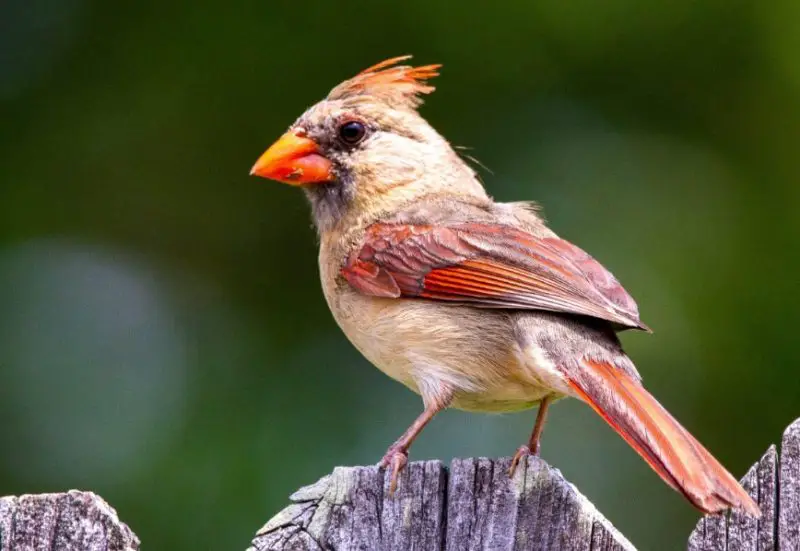
The Northern Cardinal is one of the most recognizable and beloved birds in South Carolina. Males are known for their vivid red plumage and black facial mask, while females have warm brown feathers with touches of red on their wings and crest. Both sexes have a distinctive crest and a stout, orange-red beak that adds to their bold appearance.
Their song is clear and melodious, often described as a series of rich whistles like “cheer, cheer, cheer” or “birdie, birdie, birdie.” Cardinals are active and often vocal at dawn and dusk. They’re territorial during the breeding season, and males may sing loudly from high perches to defend their space and attract mates.
In South Carolina, Northern Cardinals are permanent residents found in a variety of habitats, including suburban backyards, forest edges, thickets, and parks. They are commonly seen at bird feeders, especially those offering sunflower seeds. Their adaptability and bright color make them one of the most commonly spotted birds across the state throughout the year.
Carolina Wren (Thryothorus ludovicianus)

The Carolina Wren is a small but energetic bird with a rich chestnut-brown back, buffy underparts, and a noticeable white eyebrow stripe. Despite its small size, it carries a long, slightly curved bill and often holds its tail cocked upright. Its rounded body and quick movements make it a frequent but fleeting sight.
This wren is best known for its powerful song, often heard before the bird is seen. Its call is loud and musical, a series of repeated phrases like “teakettle-teakettle-teakettle,” delivered with surprising volume. Males sing year-round, and pairs stay together through all seasons, often duetting or calling to each other.
Carolina Wrens are year-round residents in South Carolina and thrive in dense shrubs, brush piles, forests, and gardens. They’re often seen exploring porches, garages, and even mailboxes in search of nest sites. Their adaptability to human environments and loud voice make them a common presence in urban, suburban, and rural areas.
American Robin (Turdus migratorius)
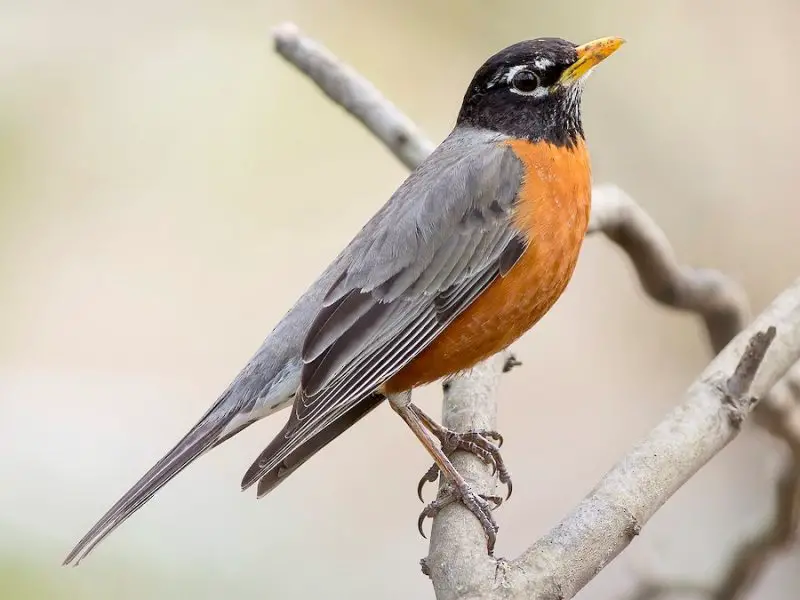
The American Robin is a medium-sized songbird with a grayish-brown back, warm orange-red breast, and a yellow beak. Its white throat has dark streaks, and it often holds an alert, upright posture. In flight, the white corners of its tail are easy to spot, especially when it’s flying low across lawns.
Its song is a familiar sign of spring, a sweet, melodic series of phrases that sound like “cheerily, cheer-up, cheerily, cheer-up.” Robins also give sharp “tut” calls as warnings. They’re active foragers, often seen running across grassy areas, pausing to tilt their heads as they listen for worms underground.
In South Carolina, American Robins are widespread and can be seen throughout the year, although numbers increase in winter when northern populations migrate south. They frequent lawns, parks, forest edges, and wooded suburbs. Their preference for open ground and fruiting trees makes them easy to observe in residential areas.
Tufted Titmouse (Baeolophus bicolor)
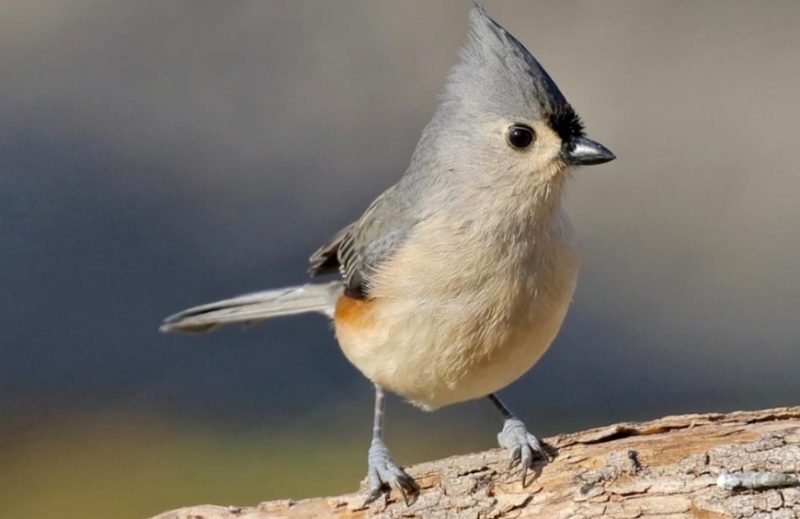
The Tufted Titmouse is a small gray bird with a white face, large black eyes, and a distinctive gray crest. It also has a rusty patch under the wings, visible when perched. Its quick movements, curious nature, and acrobatic feeding behavior make it a delight to watch at feeders and in the woods.
This bird has a clear, whistled song that sounds like “peter-peter-peter” and often travels in mixed flocks with chickadees and woodpeckers. Its calls include sharp “tsee-day-day” notes and other chirps that help it communicate while foraging. Tufted Titmice are intelligent, often grabbing seeds and flying off to cache them.
In South Carolina, they’re year-round residents and very common in deciduous forests, woodlots, and backyard feeders. They’re especially fond of sunflower seeds, suet, and peanuts. These birds are often seen flitting among tree branches or hanging upside down to pluck insects from bark and leaves.
Blue Jay (Cyanocitta cristata)
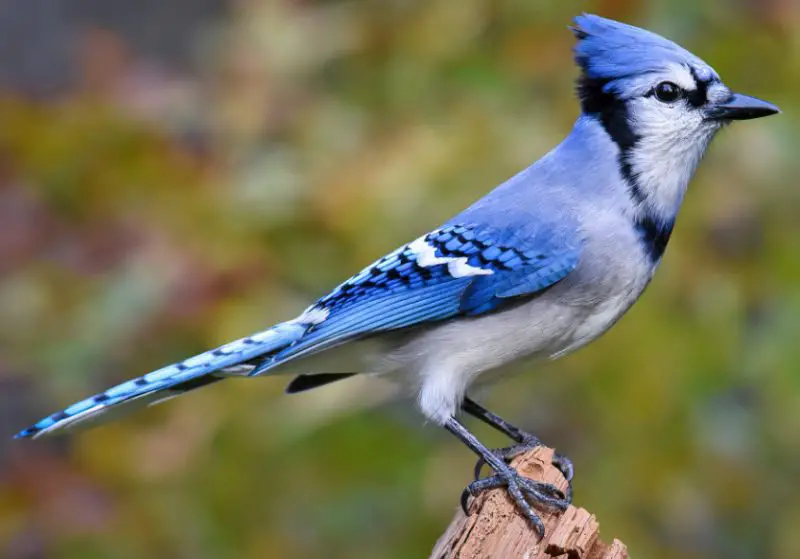
The Blue Jay is a striking bird with vibrant blue upperparts, white underparts, and bold black markings across its face and wings. Its tail is long and barred with black and white, making it one of the most eye-catching birds in South Carolina’s woodlands and backyards. The crest on its head can be raised or lowered depending on its mood.
Blue Jays are noisy and intelligent birds known for their wide range of calls, including the loud “jay jay” scream and musical whistling notes. They can mimic the calls of hawks, a tactic used to scare off other birds. Their behavior is bold, curious, and sometimes aggressive, especially around feeders or nesting sites.
They are year-round residents throughout South Carolina and thrive in forests, parks, and residential neighborhoods with large trees. They are often seen caching acorns and other food items for later, playing an important role in forest regeneration. Blue Jays are frequent visitors to bird feeders, especially those offering peanuts and sunflower seeds.
Mourning Dove (Zenaida macroura)
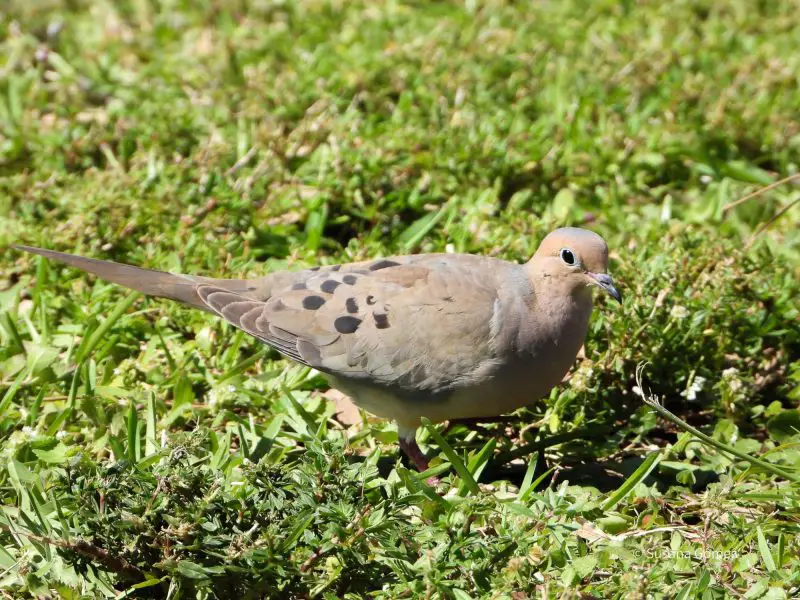
The Mourning Dove is a slender, medium-sized bird with soft gray-brown plumage and a long, pointed tail edged in white. Its body is streamlined, and its small head and black eye stand out against the gentle tones of its feathers. When perched or walking, it has a calm, graceful appearance, often seen in pairs or small groups.
Its call is one of the most familiar bird sounds in South Carolina, a low, mournful cooing that gives the species its name. The wings produce a sharp whistling noise during takeoff or landing, a sound that can startle predators or alert other doves nearby. Mourning Doves forage mainly on the ground, feeding on seeds and grains.
These birds are common throughout South Carolina year-round and are especially visible in open habitats like fields, roadsides, and suburban lawns. They often perch on wires or rooftops and are frequent visitors to ground feeders. Their gentle nature and soft colors make them a peaceful presence across both urban and rural settings.
Red-bellied Woodpecker (Melanerpes carolinus)

The Red-bellied Woodpecker is a striking bird with a bold black-and-white striped back and a pale face. Males have a bright red cap that extends from their bill to the nape, while females have red only on the back of the head and neck. Despite its name, the red on the belly is faint and often hard to see unless viewed up close.
Its call is a loud, rolling “churr” or “querr,” and it also produces a variety of short, chuckling notes. The Red-bellied Woodpecker is often heard before it is seen, and it drums loudly on tree trunks or metal surfaces to communicate. It feeds on insects, fruits, nuts, and seeds, often climbing tree trunks with ease.
This species is found throughout South Carolina year-round and prefers mature woodlands, forest edges, and suburban yards with tall trees. It readily visits suet feeders and is especially active in the morning hours. With its loud voice and acrobatic movements, it’s one of the most noticeable woodpeckers in the state.
Downy Woodpecker (Dryobates pubescens)
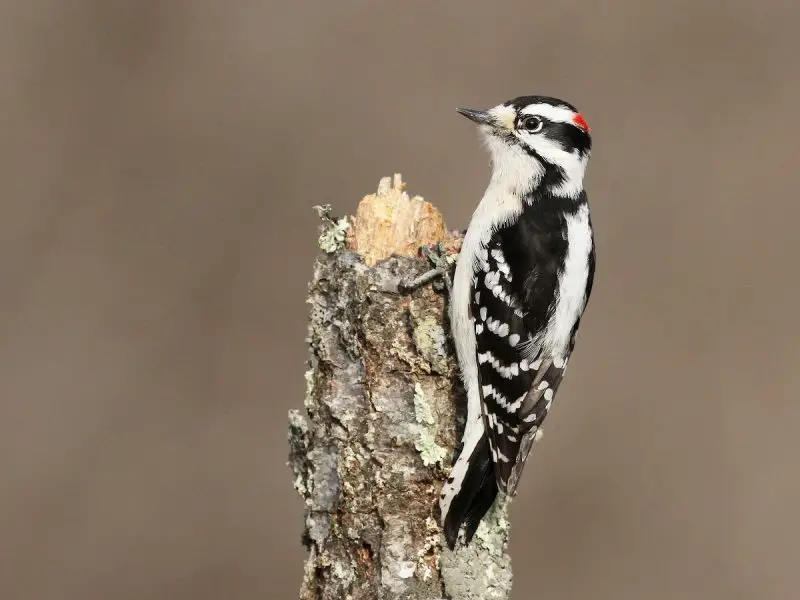
The Downy Woodpecker is the smallest woodpecker in South Carolina, easily recognized by its black-and-white plumage and short, stubby bill. Males have a small red patch on the back of the head, while females lack the red. Its compact size and quick movements make it a lively and charming visitor to backyards and woods.
Its calls are high-pitched and sharp, often described as a soft “pik” or descending whinny. Like other woodpeckers, it also drums on wood to communicate. Downy Woodpeckers forage by tapping and probing tree bark for insects and larvae, and they also enjoy suet and sunflower seeds at feeders.
This bird is a year-round resident across South Carolina and thrives in a wide range of wooded habitats, including parks, gardens, and forests. It’s often seen alongside chickadees and titmice in mixed foraging flocks. Its tame behavior and frequent appearances at feeders make it a favorite among birdwatchers.
Northern Mockingbird (Mimus polyglottos)
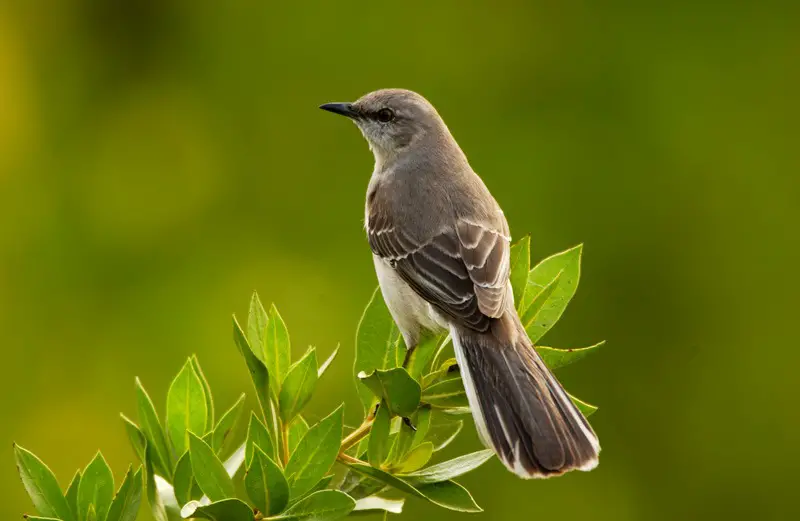
The Northern Mockingbird is a medium-sized bird with gray upperparts, a pale belly, and bold white patches on the wings and tail that flash in flight. Its slender build, long tail, and upright posture give it a confident presence. It’s often seen perched on fences, trees, or utility lines as it surveys its surroundings.
Famous for its singing, the Northern Mockingbird has an extensive and varied song repertoire, often mimicking other birds, mechanical noises, or even frogs. Males sing loudly, especially during spring and summer, and sometimes throughout the night. Their song can last for minutes and shift constantly in tone and rhythm.
Mockingbirds are year-round residents in South Carolina and are found in open areas with scattered shrubs or trees, such as suburban yards, parks, and farmland edges. They are territorial and may chase away intruders with aggressive flights or calls. Their adaptability and remarkable vocal skills make them one of the most fascinating birds in the region.
Carolina Chickadee (Poecile carolinensis)
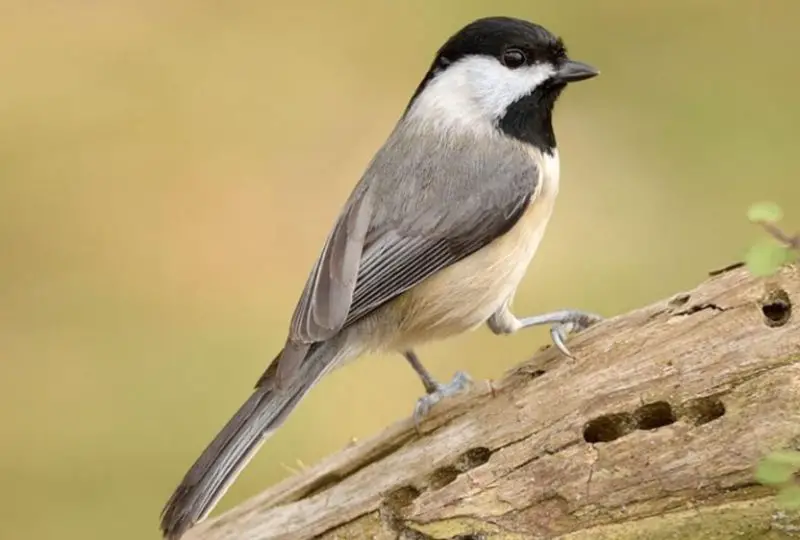
The Carolina Chickadee is a tiny bird with a black cap and bib, white cheeks, and soft gray body. It is nearly identical in appearance to the Black-capped Chickadee but is the only one naturally found in most of South Carolina. Its small, round body and constant motion make it a cheerful presence in wooded areas.
Its calls include the familiar “chick-a-dee-dee-dee” and a sweet, whistled “fee-bee-fee-bay” song. These sounds are used to communicate with other chickadees and warn of predators. Carolina Chickadees are curious and fearless, often coming close to people and exploring feeders or tree trunks in quick, darting movements.
They live year-round in South Carolina and are common in deciduous forests, mixed woods, suburban yards, and parks. They often join flocks with titmice and woodpeckers and are regular visitors to feeders, especially in winter. Despite their small size, they are bold, social, and endlessly entertaining to watch.
Eastern Bluebird (Sialia sialis)
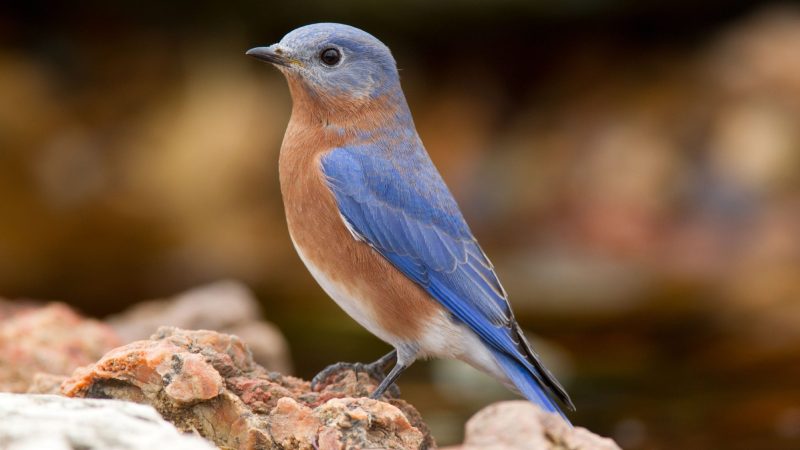
The Eastern Bluebird is a charming thrush with bright blue upperparts and a warm reddish-orange chest, contrasting with a white belly. Males are especially vivid, while females have more subdued tones with bluish wings and tail. Their posture is upright and alert, often perched on wires or low branches.
Their song is soft and melodious, a series of warbles and whistles that sound sweet and gentle. They also emit short “chit” and “tru-ly” calls while communicating with mates or young. Eastern Bluebirds feed mostly on insects and berries and are often seen dropping to the ground to catch prey before returning to a perch.
In South Carolina, they are year-round residents and commonly found in open habitats like meadows, pastures, golf courses, and suburban lawns. They readily use nest boxes, making them a favorite among bird lovers who provide proper housing. Their bright colors and gentle nature make them one of the most beloved birds in the state.
House Finch (Haemorhous mexicanus)
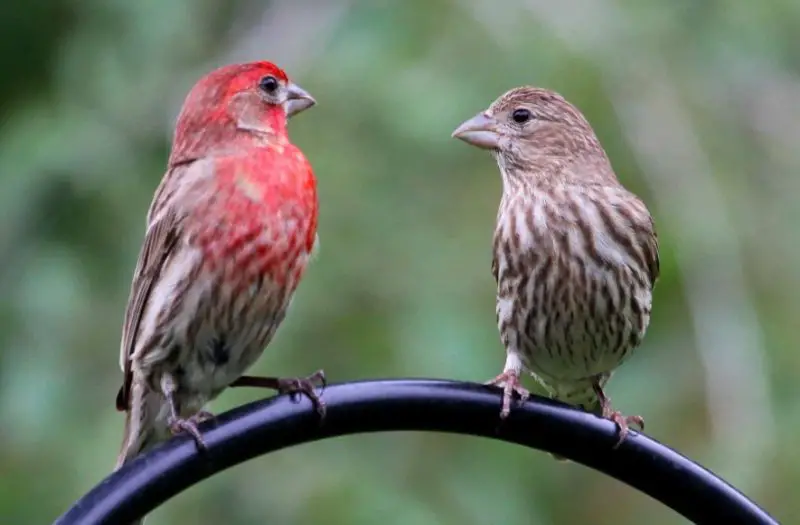
The House Finch is a small, social bird with a brown-streaked body and a slightly notched tail. Males are easy to identify with their rosy red foreheads, breasts, and rumps, while females are plain brown and streaky overall. Their conical bills are well-suited for cracking seeds, their primary food.
Their song is a cheerful, warbling mixture of notes, and males sing persistently during the breeding season. House Finches also emit soft “cheep” calls while foraging or flying. They’re often seen in noisy flocks, especially around feeders, and their friendly nature allows them to thrive in human-dominated areas.
Originally native to the western U.S., House Finches are now widespread in South Carolina year-round. They’re most often seen in urban and suburban areas, especially near homes, shopping centers, and farms. Their adaptability and tolerance of people make them one of the most frequently observed feeder birds across the state.
American Goldfinch (Spinus tristis)

The American Goldfinch is a small, lively finch known for its bright yellow breeding plumage in males, with black wings and cap. Females are duller, wearing olive and yellow tones. In winter, both sexes molt into a more subdued brownish appearance but retain the same cheerful flight and bouncy behavior.
Its call is a series of musical chirps and a sweet, whistling song, often given during flight or when foraging. Goldfinches are active and social, often flying in small flocks with an undulating flight pattern. They feed mainly on seeds, especially from thistles, sunflowers, and other native plants.
In South Carolina, American Goldfinches are year-round residents but are more noticeable during winter months when they visit feeders more often. They are commonly found in open fields, weedy patches, gardens, and woodland edges. Their bright summer colors and pleasant songs make them a favorite among backyard birders.
European Starling (Sturnus vulgaris)
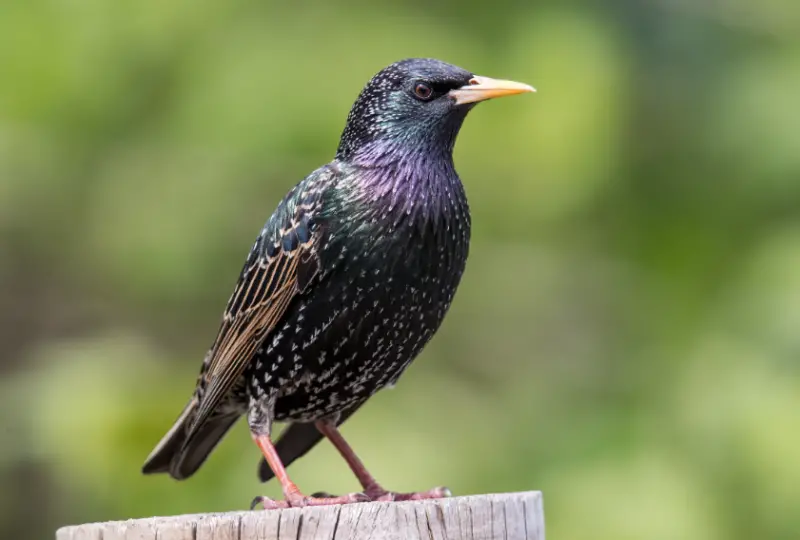
The European Starling is a stocky, medium-sized bird with iridescent black plumage that shines purple and green in sunlight. In winter, their feathers are speckled with white dots. They have yellow beaks during the breeding season, which turn dark in winter. Their short tail and strong, direct flight make them easy to spot in flocks.
Starlings are excellent mimics, and their vocalizations include whistles, clicks, buzzes, and imitations of other bird species. Their behavior is bold and noisy, often seen foraging in large groups or gathering in massive, swirling flocks known as murmurations. They feed on insects, grains, fruits, and garbage.
Introduced to North America in the 1800s, European Starlings are now widespread across South Carolina year-round. They thrive in urban, suburban, and rural environments, often nesting in building cavities, vents, and trees. Though sometimes considered invasive, their intelligence and acrobatic flight are undeniably fascinating.
Common Grackle (Quiscalus quiscula)

The Common Grackle is a large, glossy blackbird with striking iridescent plumage that may shine blue, green, or purple in the right light. It has a long, keel-shaped tail and a pale yellow eye that gives it a piercing look. Males are larger and more iridescent than females, but both are bold and highly noticeable.
Their calls are loud, metallic, and often described as harsh or creaky, including squeaks and “readle-eek” sounds. They’re known for gathering in noisy flocks and may dominate feeders or forage in groups across lawns and fields. Grackles are opportunistic and feed on insects, seeds, grains, and even small animals.
In South Carolina, they are common year-round, particularly in agricultural fields, parks, wetlands, and suburban areas. They often nest in colonies and roost in large groups during non-breeding seasons. Though sometimes considered a nuisance, their shimmering feathers and social behavior make them stand out in any setting.
Brown Thrasher (Toxostoma rufum)
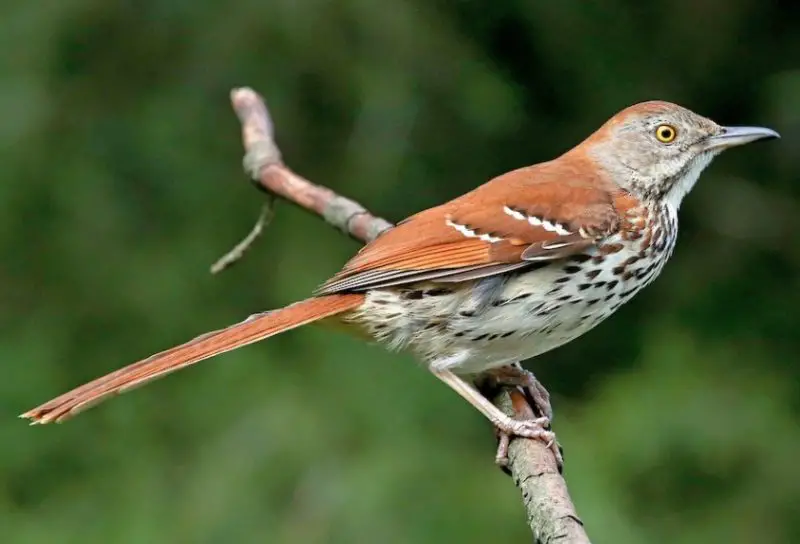
The Brown Thrasher is a medium-sized songbird with rich reddish-brown upperparts, heavily streaked underparts, and bright yellow eyes. It has a long tail and a slightly curved bill, giving it a distinctive look among South Carolina’s backyard birds. This bird is secretive but often flashes its white wing bars when it moves between shrubs.
It is known for its remarkable singing ability, with a repertoire of over 1,000 song variations. Each phrase is typically repeated twice, and the song is a mix of clear whistles, chatters, and trills. Though shy, the Brown Thrasher will vocalize from a high perch or within dense foliage, especially during the spring.
This bird prefers thick hedgerows, woodland edges, and dense shrubs across South Carolina. It is a year-round resident in the state and is more often heard than seen. The Brown Thrasher is the official state bird of Georgia but is also widely appreciated by South Carolina birdwatchers for its secretive charm and musical talents.
Eastern Towhee (Pipilo erythrophthalmus)
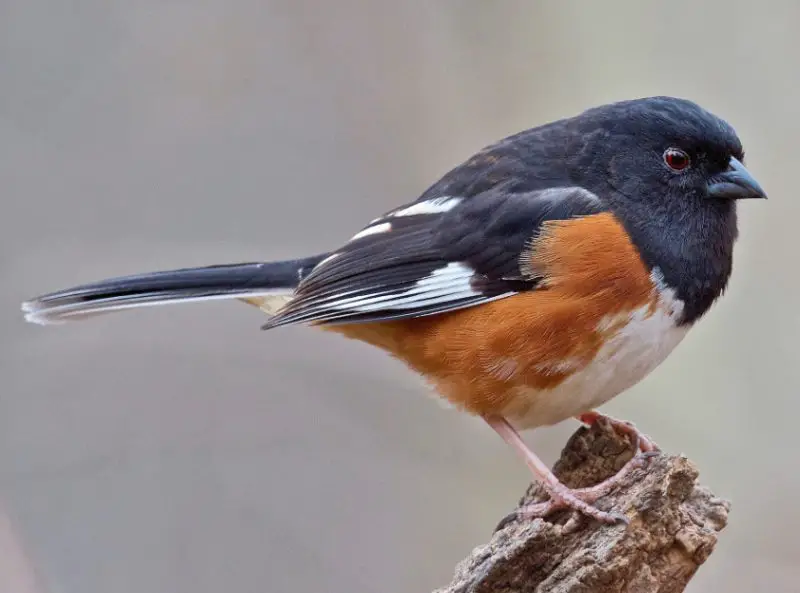
The Eastern Towhee is a large sparrow with striking black upperparts in males, rusty flanks, and a white belly. Females have the same pattern but are brown instead of black. Their bold coloration, red eyes, and long tail with white corners make them unmistakable when seen on the ground or in shrubs.
Its song sounds like “drink-your-tea!” and is followed by a metallic trill. It also makes sharp “chewink” calls. Eastern Towhees are ground foragers, often scratching through leaf litter with a two-footed hop in search of seeds and insects. Though their behavior is somewhat shy, their calls help reveal their presence.
They are found throughout South Carolina year-round in brushy areas, forest edges, overgrown fields, and thickets. These birds often visit backyard feeding stations near dense cover. Their contrasting colors and distinctive voices make them a favorite for birders who enjoy patient observation.
Red-winged Blackbird (Agelaius phoeniceus)
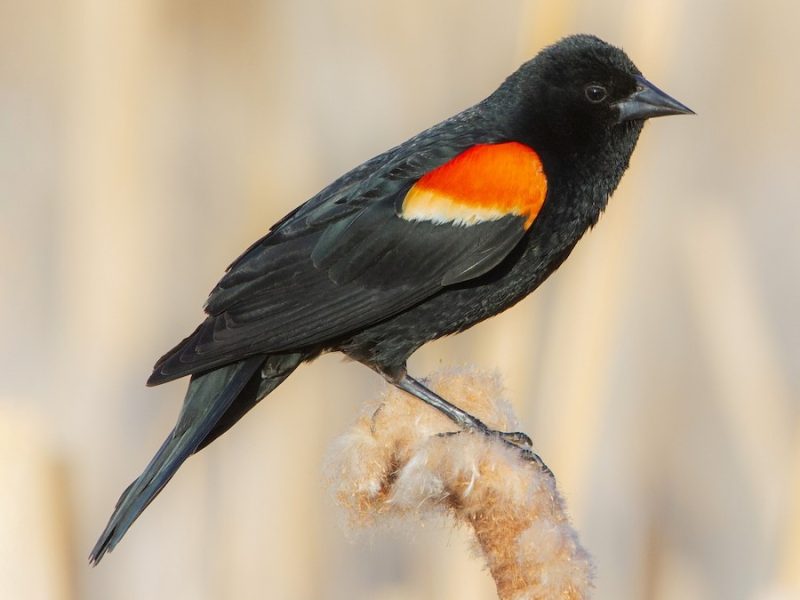
The Red-winged Blackbird is one of the most recognizable wetland birds in South Carolina. Males are glossy black with bold red and yellow shoulder patches, while females are heavily streaked brown and look sparrow-like. Males often perch conspicuously atop cattails or shrubs, defending their territory.
Their call is a loud, gurgling “conk-a-ree!” that echoes across marshes and ponds. During the breeding season, males sing loudly and display their red epaulets to attract mates and challenge rivals. Red-winged Blackbirds forage in flocks and eat seeds, grains, and insects depending on the season.
They are year-round residents across much of South Carolina, especially in freshwater wetlands, wet meadows, and agricultural fields. In winter, they often gather in massive flocks mixed with other blackbirds. Their presence and loud songs make them a dynamic part of the state’s birdlife.
Yellow-rumped Warbler (Setophaga coronata)
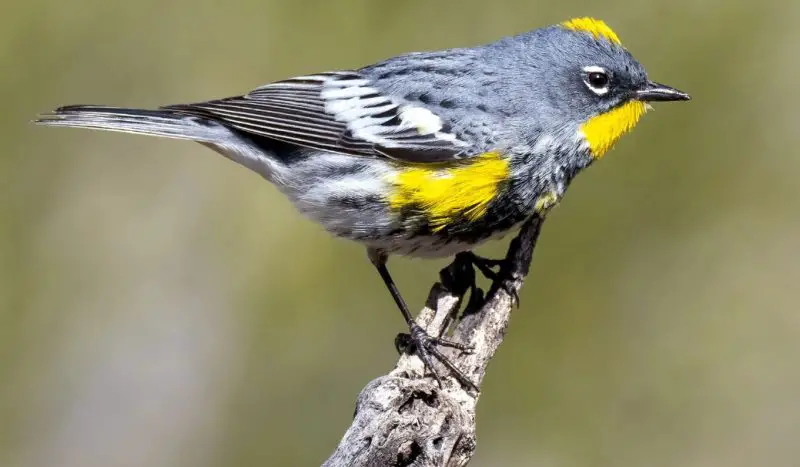
The Yellow-rumped Warbler is a small, energetic warbler with gray plumage, white underparts, black streaking, and bright yellow patches on the sides, crown, and rump. In winter, they appear more brownish but retain the signature yellow rump that gives them their name.
This warbler has a soft “chip” call and a pleasant, sweet trill for a song. It’s often seen flitting about treetops or flying out to catch insects in mid-air. In cooler months, it feeds on berries and wax-coated fruits, including those from wax myrtles, which allow it to winter farther north than most warblers.
In South Carolina, the Yellow-rumped Warbler is a common winter visitor from late fall through early spring. It can be found in a wide range of habitats, including pine forests, coastal woodlands, and urban parks. Its active foraging style and distinctive coloration make it easy to spot during winter birdwatching.
Ruby-throated Hummingbird (Archilochus colubris)
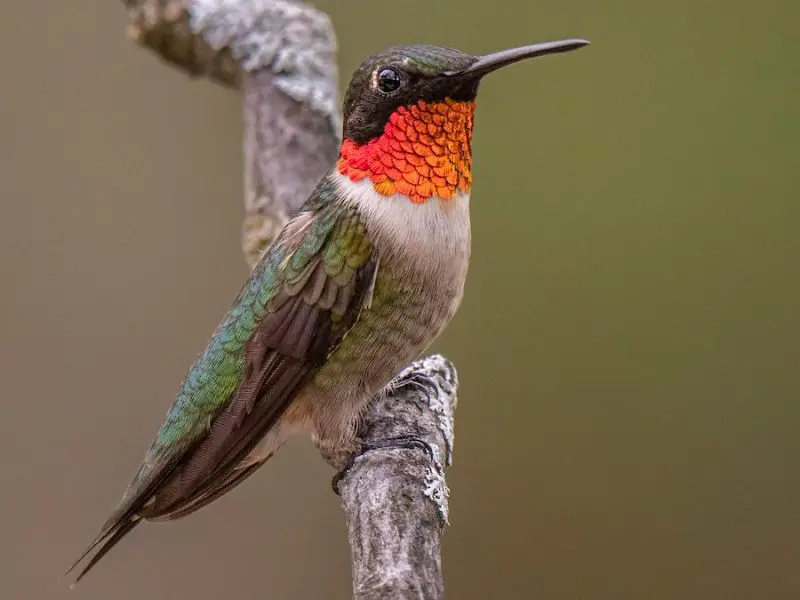
The Ruby-throated Hummingbird is a tiny, iridescent bird known for its hovering flight and rapid wingbeats. Males have a brilliant red throat, emerald green back, and white underparts, while females are green above and pale below without the red throat. Their long, slender bills are perfect for sipping nectar.
They produce a series of high-pitched chips and the whir of their wings is audible as they dart through the air. These hummingbirds are territorial and can be surprisingly aggressive at feeders, chasing away rivals with fast, swooping flights. In addition to nectar, they eat small insects and spiders.
Ruby-throated Hummingbirds are common summer residents in South Carolina, arriving in March or April and departing by October. They are most frequently seen in gardens with flowering plants, hummingbird feeders, and wooded edges. Their dazzling appearance and busy activity make them a highlight of the warmer months.
Chimney Swift (Chaetura pelagica)
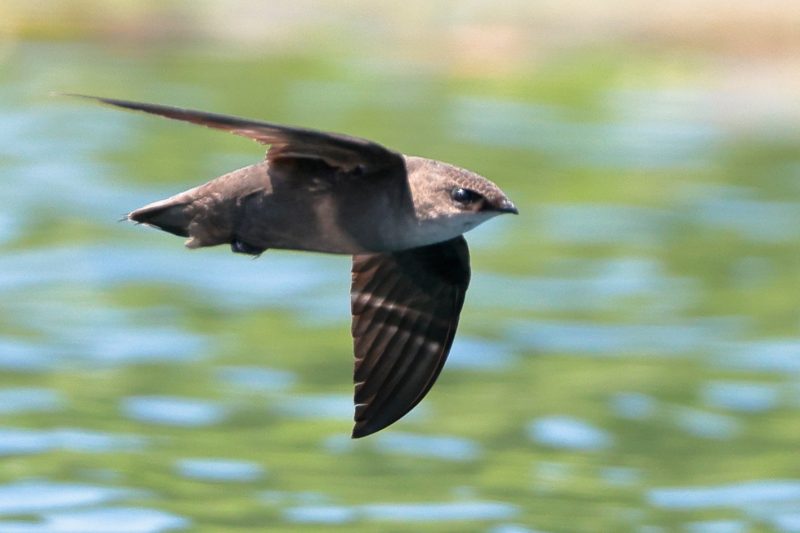
The Chimney Swift is a slender, sooty-gray bird with long, curved wings and a short, stubby tail. Its body shape resembles a flying cigar, and it almost never perches like other birds. Instead, it clings to vertical surfaces, such as the insides of chimneys or hollow trees.
Their high-pitched, chattering calls are often heard overhead in summer as they perform agile aerial maneuvers. Chimney Swifts feed exclusively on flying insects, which they catch while constantly flying. Their flight is fast and erratic, often seen in small flocks twisting through the sky.
These birds are summer visitors to South Carolina, arriving in April and leaving by early fall. They nest in chimneys and older buildings in towns and cities, as well as rural structures. Watching them swirl into a communal roost at dusk is a spectacular sight for bird enthusiasts in the region.
Purple Martin (Progne subis)
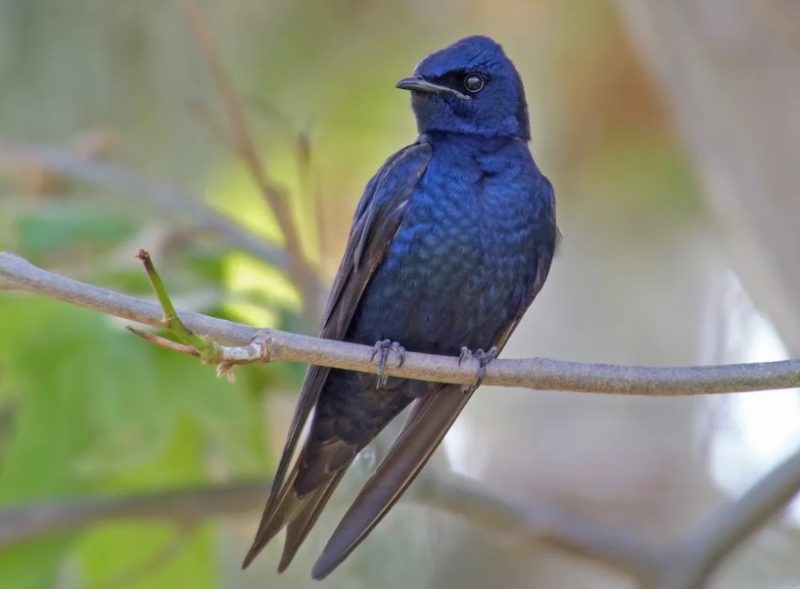
Purple Martins are the largest swallows in North America, with males displaying glossy, dark purple feathers and slightly forked tails. Females and juveniles are lighter, with grayish bellies and less sheen. These elegant birds are highly social and often live in large colonies.
Their call is a musical series of chirps and bubbling notes that carry well in open air. Purple Martins are expert flyers, gracefully swooping through the sky as they feed on flying insects. They are also known to rely heavily on man-made nesting houses provided by people.
In South Carolina, Purple Martins arrive in early spring to breed and depart by late summer for South America. They are commonly found near open fields, lakes, and suburban areas with martin houses or gourds. Their return each year is eagerly awaited by many local birdwatchers.
Barn Swallow (Hirundo rustica)

Barn Swallows are graceful birds with metallic blue backs, rusty-orange throats and bellies, and deeply forked tails. Their long tail streamers and acrobatic flight make them a favorite to watch during the warmer months. Both sexes are similar, though males often have longer tail feathers.
Their song is a cheerful series of twitters and warbles, and they communicate constantly while in flight. Barn Swallows are insectivores that feed on the wing, catching flies, mosquitoes, and other flying insects during long flights over open areas.
They are summer breeders throughout South Carolina and are often seen around barns, bridges, and other man-made structures where they build cup-shaped mud nests. Their adaptability to human environments and striking appearance make them one of the most welcome signs of spring.
Great Egret (Ardea alba)
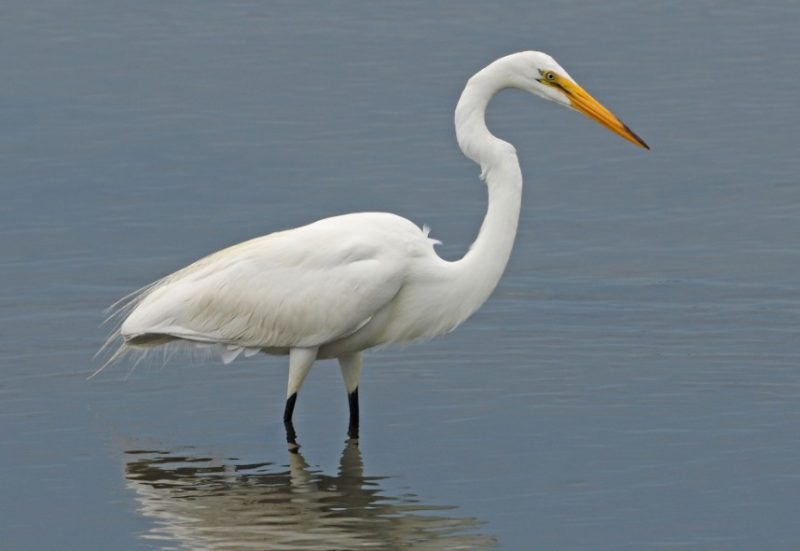
The Great Egret is a tall, elegant wading bird with pure white feathers, a long yellow bill, and black legs. It stands over three feet tall and has a graceful neck that forms an S-shape in flight. During the breeding season, they grow long, lacy plumes on their backs.
Their call is a low, harsh croak, often heard when they take flight. These birds hunt slowly and methodically in shallow water, stalking fish, frogs, and insects before striking with lightning-fast precision. They are patient feeders, often standing still for long periods.
Great Egrets are found year-round along South Carolina’s coast and wetlands, and seasonally in inland areas. They thrive in marshes, lakes, tidal creeks, and rice fields. Their striking appearance and slow, deliberate movements make them easy to spot and photograph.
Snowy Egret (Egretta thula)
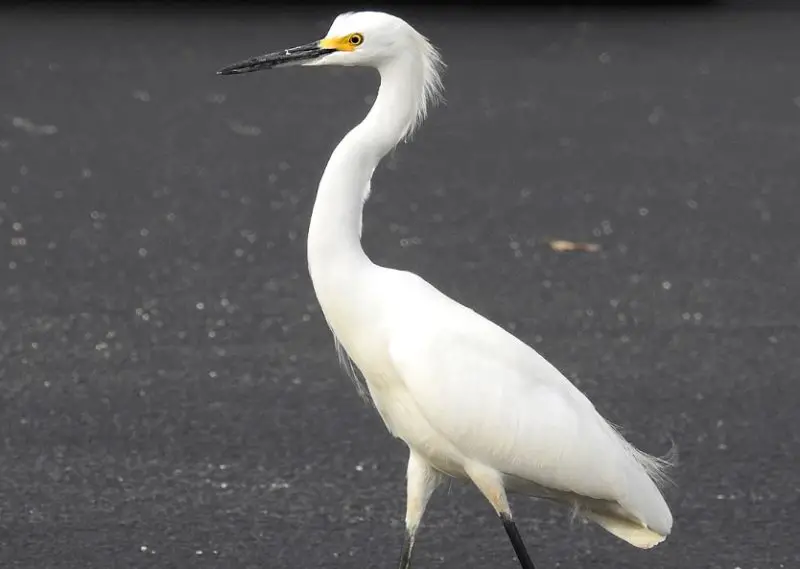
The Snowy Egret is a smaller, more delicate relative of the Great Egret, with snowy white plumage, a slender black bill, and bright yellow feet. During the breeding season, adults display striking plumes on their heads, necks, and backs, and their feet turn a deeper golden color.
They are more vocal than Great Egrets, often producing sharp, nasal calls when disturbed. Snowy Egrets are active hunters, using their bright feet to stir up fish and other prey in shallow water. They often forage in groups and exhibit more animated feeding behaviors.
In South Carolina, Snowy Egrets are commonly found along the coast, in estuaries, marshes, and tidal flats throughout the warmer months. Some individuals may overwinter in milder southern areas. Their elegant look and energetic behavior make them a standout among wading birds.
Great Blue Heron (Ardea herodias)
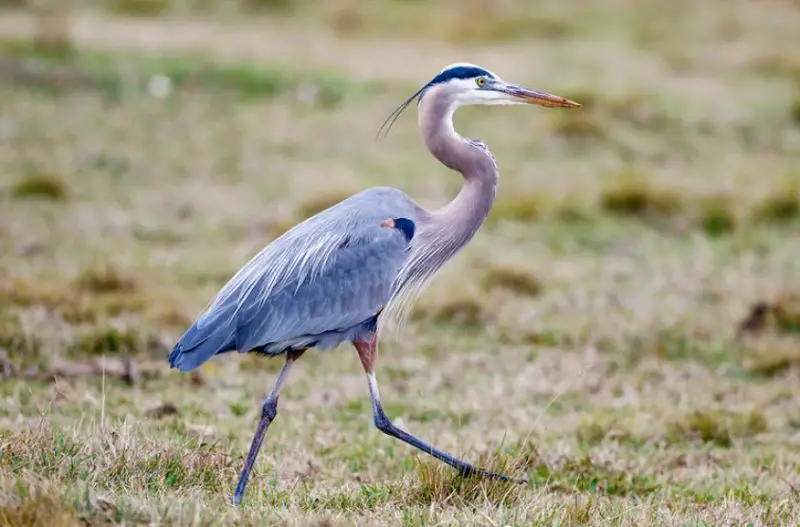
The Great Blue Heron is the largest heron in North America, with a height of over 4 feet and a wingspan reaching nearly 6 feet. It has blue-gray plumage, a long neck with a white face and black crown stripe, and a dagger-like yellow bill. In flight, it tucks its neck into an S-shape and glides slowly with powerful wingbeats.
Its call is a deep, hoarse “fraaank” that is often heard when it’s startled or flying overhead. Great Blue Herons are solitary hunters that patiently stalk fish, frogs, and small mammals in shallow water. They strike with lightning-fast speed and can be seen standing still for long periods.
This species is a common sight year-round in South Carolina’s wetlands, tidal marshes, ponds, and coastal areas. It often nests in tall trees near water, sometimes forming colonies with other herons. Its stately appearance and widespread presence make it a favorite among birdwatchers.
White Ibis (Eudocimus albus)

The White Ibis is a medium-sized wading bird with bright white plumage, a long, down-curved pinkish-orange bill, and pink legs. Adults are striking in flight with black wingtips, while juveniles are brown with white underparts and gradually turn white as they mature.
Their vocalizations are a series of soft, nasal honks or grunts, often heard in feeding flocks or roosting colonies. White Ibises forage by probing in mud and shallow water for insects, crustaceans, and small aquatic creatures. They often move in groups, following each other across feeding grounds.
In South Carolina, the White Ibis is mostly seen along the coast and in inland wetlands, especially during the warmer months. They are common in marshes, estuaries, rice fields, and shallow lagoons. Their graceful movements and flocking behavior make them a fascinating species to observe.
Bald Eagle (Haliaeetus leucocephalus)
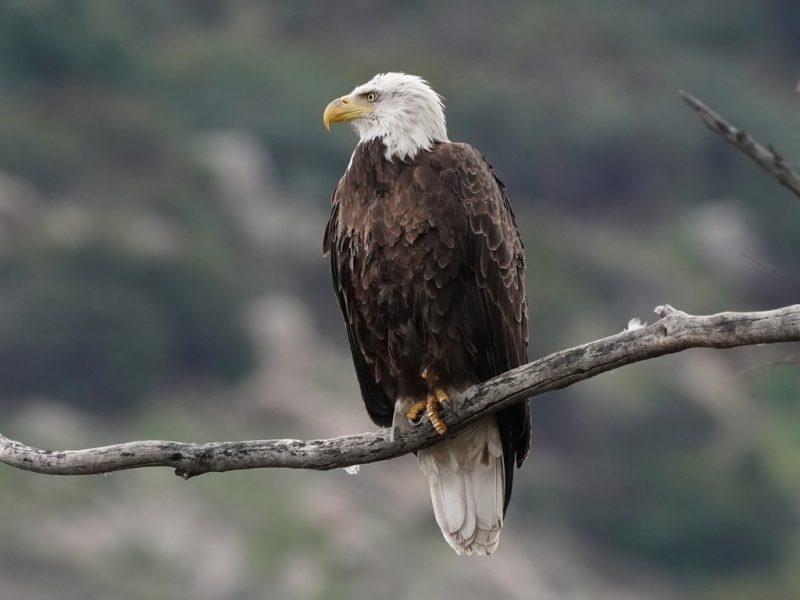
The Bald Eagle is a powerful bird of prey with a white head and tail, dark brown body, and massive yellow beak. Its wingspan can exceed 7 feet, and it’s often seen soaring high with slow, strong wingbeats or perched in tall trees near water.
It produces a high-pitched, whistling call, which contrasts with its majestic appearance. Bald Eagles primarily feed on fish, but they’ll also eat carrion and occasionally hunt birds and small mammals. They are known to steal food from other birds, especially ospreys.
Bald Eagles are found in South Carolina year-round, particularly near large lakes, rivers, reservoirs, and coastal estuaries. They build enormous stick nests, often reusing the same site for many years. Their resurgence in the state is a conservation success story, and they are now regularly spotted across much of the state.
Osprey (Pandion haliaetus)
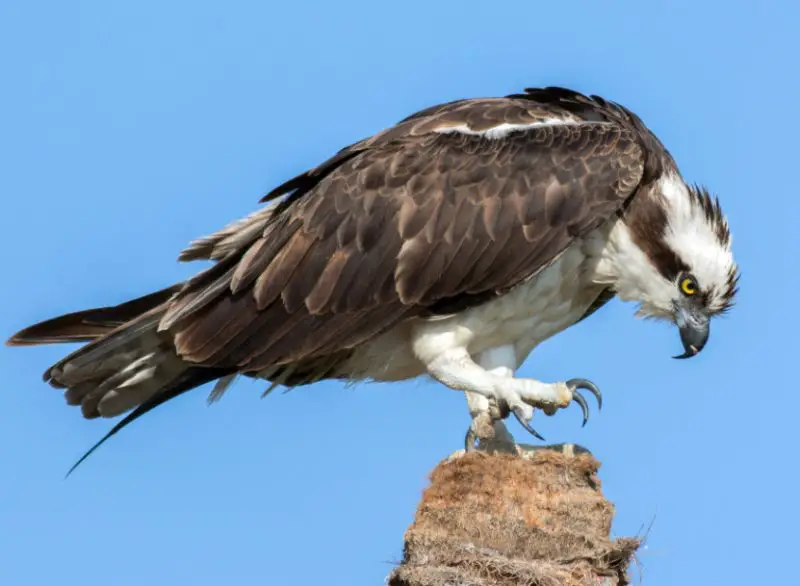
The Osprey is a large raptor with dark brown upperparts, a white head and underparts, and a dark eye stripe. It has long wings with a distinctive M-shape when flying and is often seen hovering or diving feet-first into water to catch fish, which make up nearly all of its diet.
It calls with a series of sharp whistles and chirps, often when near its nest or when alarmed. Ospreys are skilled fishers, using their strong talons and reversible outer toes to grasp slippery prey. They often carry fish head-first in flight for aerodynamic efficiency.
In South Carolina, Ospreys are widespread near lakes, rivers, reservoirs, and the coast, especially during the breeding season from spring through early fall. Some individuals remain through winter in milder regions. They commonly nest on man-made platforms, utility poles, or dead trees near water.
Turkey Vulture (Cathartes aura)

The Turkey Vulture is a large, dark bird with long, broad wings, a small red featherless head, and a hooked beak. Its flight is distinctive, with wings held in a shallow V shape as it glides effortlessly using thermals. Underneath, its wings appear two-toned, with paler flight feathers.
It is mostly silent but may hiss or grunt when threatened. Turkey Vultures are scavengers that feed almost exclusively on carrion. They have an excellent sense of smell, rare among birds, allowing them to locate carcasses from great distances.
These birds are common throughout South Carolina year-round, soaring over forests, farmlands, highways, and marshlands. They often roost in groups in trees or on structures and are frequently seen in the company of Black Vultures. Their role as nature’s clean-up crew makes them vital to the ecosystem.
Black Vulture (Coragyps atratus)
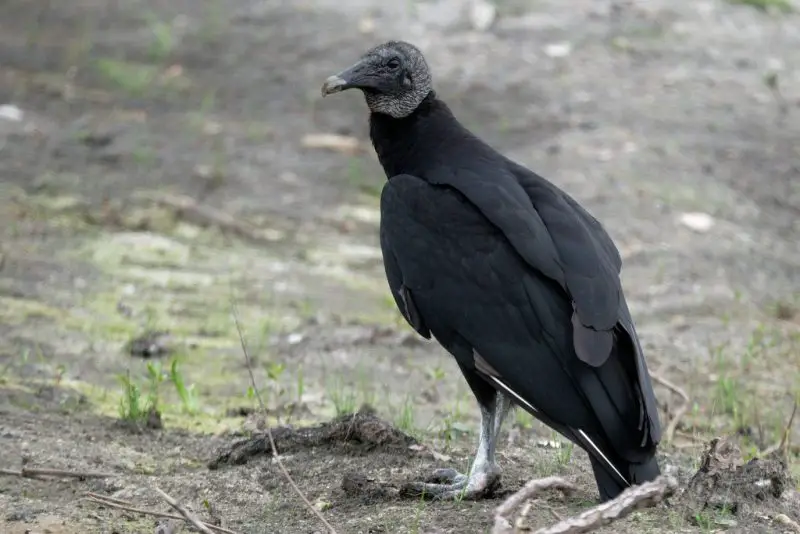
The Black Vulture is a stocky scavenger with dark black feathers, short tail, broad wings, and a wrinkled grayish-black head. Its wings have silvery tips on the underside, which are visible in flight and help distinguish it from the Turkey Vulture. On the ground, it walks with a hunched posture and strong, deliberate steps.
It is mostly silent but can emit grunts or hisses, especially when feeding or at roosts. Unlike the Turkey Vulture, the Black Vulture relies more on sight than smell to find carrion and often follows other vultures to food. It’s a bold and social bird, often feeding in tight groups and roosting communally.
In South Carolina, Black Vultures are found year-round across rural and urban areas, especially near forests, farmlands, highways, and landfills. They often perch on cell towers, rooftops, or dead trees. While not as graceful in flight, their communal behavior and adaptability make them a common sight.
Red-tailed Hawk (Buteo jamaicensis)
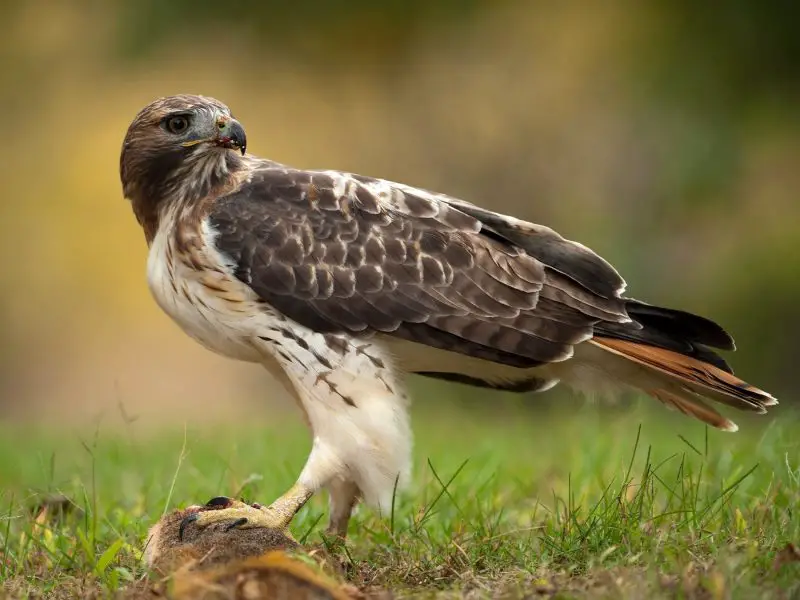
The Red-tailed Hawk is one of the most widespread and familiar raptors in North America. It has broad wings, a pale chest, and a short, wide red tail that gives the bird its name. Adults have a streaked belly band and a fierce-looking face with a yellow hooked beak.
Its call is a distinctive, raspy scream that is often used in movies to represent any bird of prey. Red-tailed Hawks hunt small mammals, birds, and reptiles, usually from a perch or by soaring over open fields. They’re powerful and precise, diving swiftly when prey is spotted.
These hawks live year-round in South Carolina and can be seen along roadsides, open fields, forests, and even suburban areas. They frequently perch on utility poles or fence posts. Their adaptability to various habitats has made them one of the most observed birds of prey in the state.
Cooper’s Hawk (Accipiter cooperii)
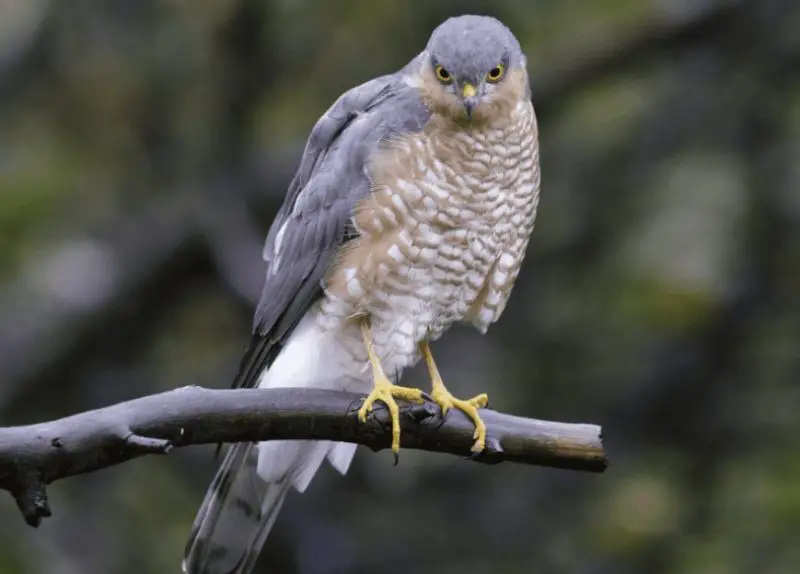
The Cooper’s Hawk is a medium-sized, agile raptor with a long tail, short rounded wings, and intense red eyes in adults. It has a blue-gray back, reddish barring on the chest, and a dark cap on the head. Juveniles are brown with vertical streaking on the underparts.
Its call is a rapid series of “cak-cak-cak” notes, especially around nesting sites. Cooper’s Hawks are stealthy and fast flyers, often darting through trees to surprise prey, which includes small birds and mammals. They are known for their ambush tactics and dramatic chase flights.
Cooper’s Hawks are year-round residents in South Carolina, frequently found in woodlands, parks, and neighborhoods with mature trees. They sometimes visit backyard bird feeders—not for the seed, but to hunt feeder birds. Their adaptability and speed make them both admired and controversial among birdwatchers.
Barred Owl (Strix varia)
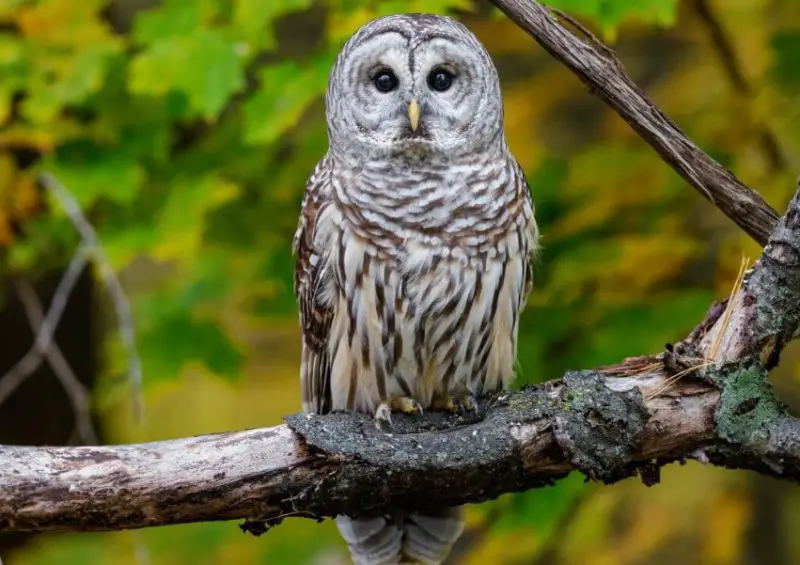
The Barred Owl is a large, round-headed owl with dark eyes and horizontal barring on the chest and vertical streaks on the belly. It has a mottled brown and white appearance, no ear tufts, and a smooth facial disk. This owl is about 20 inches tall with a wingspan over 3 feet.
Its famous call sounds like “Who cooks for you? Who cooks for you all?”—a series of hoots that echoes through forests. Barred Owls are primarily nocturnal and hunt rodents, amphibians, and insects by gliding silently through woodlands. They often perch quietly during the day in dense foliage.
Barred Owls are found year-round in South Carolina, particularly in moist forests, swamps, and wooded suburban areas. They often nest in natural cavities or old hawk or squirrel nests. Because of their vocalizations and large size, they are one of the most recognizable owls in the Southeast.
Eastern Screech-Owl (Megascops asio)

The Eastern Screech-Owl is a small, compact owl with ear tufts, yellow eyes, and plumage that comes in gray or reddish-brown morphs, both offering excellent camouflage. It has a stocky appearance and a short tail, standing just 6 to 10 inches tall.
Its call is not a screech but a haunting, descending whinny and a soft trilling sound. These owls are active at night, hunting small mammals, birds, and insects from a perch. They can also be quite tame, often roosting near human homes and using nest boxes.
In South Carolina, Eastern Screech-Owls are year-round residents in forests, wooded parks, and residential neighborhoods with mature trees. They are elusive during the day but become more vocal and noticeable at night. Their adaptability and mysterious nature make them a fascinating bird for nighttime birders.
Pileated Woodpecker (Dryocopus pileatus)
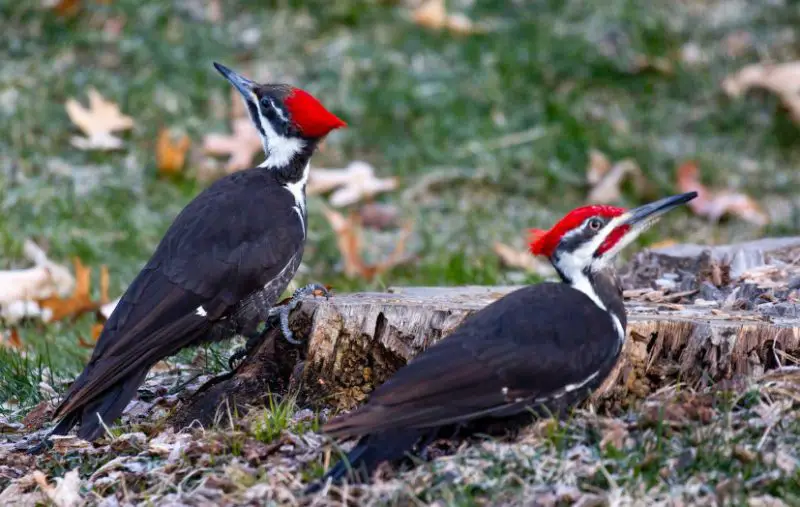
The Pileated Woodpecker is the largest woodpecker in South Carolina, easily recognized by its crow-sized body, striking black and white plumage, and vivid red crest. Males also have a red stripe on the cheek. Its powerful beak is capable of carving rectangular holes in trees, a sign of its presence in the woods.
Its call is a loud, echoing “kuk-kuk-kuk,” and its drumming resonates like a slow, deep roll on a drum. Pileated Woodpeckers feed on carpenter ants, beetle larvae, and wood-boring insects, often tearing apart dead wood to access their prey. They may also eat berries and nuts in winter.
These woodpeckers are found year-round across South Carolina, especially in mature forests with large, dead or dying trees. They prefer bottomland hardwoods, swamps, and pine forests. Their size, bold behavior, and resonant calls make them a thrilling sight for birders.
Killdeer (Charadrius vociferus)

The Killdeer is a large plover with long legs, a slender build, and distinctive double black bands across its white chest. It has brown upperparts, a white belly, and a bright orange rump that’s visible in flight. Its name comes from its loud, high-pitched call, which sounds like “kill-deer!”
This species is famous for its “broken-wing” act, where it feigns injury to lure predators away from its nest. Killdeer often nest on the ground in open areas like gravel driveways, golf courses, and farmland. They feed on insects and other small invertebrates by running and stopping quickly across the ground.
In South Carolina, Killdeer are found throughout the year in open fields, pastures, beaches, and urban edges. Their high visibility and dramatic nesting behavior make them one of the most familiar shorebirds in non-shore habitats.
Northern Flicker (Colaptes auratus)
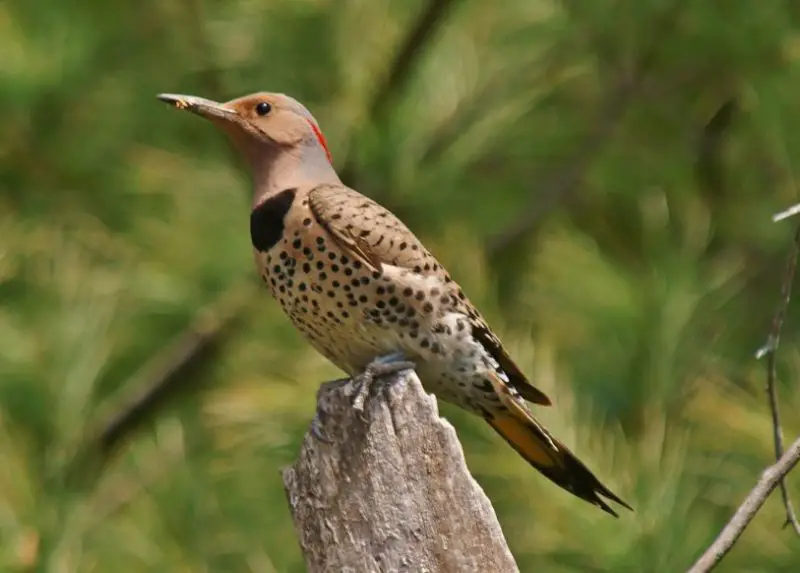
The Northern Flicker is a medium-to-large woodpecker with a unique appearance. It has a tan face and underparts with black spots, a black bib, and a white rump that flashes in flight. In the eastern U.S., including South Carolina, flickers display bright yellow underwings and tail feathers.
Their calls are a sharp “kleer” and a loud, repeated “wik-wik-wik,” along with a strong, rhythmic drumming on trees or even metal surfaces. Unlike most woodpeckers, flickers often forage on the ground, feeding primarily on ants and beetles.
Northern Flickers are common year-round in South Carolina, particularly in open woodlands, forest edges, parks, and suburban areas. They may nest in tree cavities or nest boxes. Their ground-foraging behavior and vibrant plumage make them a fun woodpecker to watch.
House Sparrow (Passer domesticus)

The House Sparrow is a small, chunky songbird with gray and brown plumage. Males have a gray crown, black throat and chest, and chestnut nape, while females are plainer with brown streaks and a buff eyebrow. Originally native to Europe and Asia, it was introduced to North America in the 19th century.
Its call is a constant series of chirps and short cheeps, often heard in urban settings. House Sparrows are highly social and form large flocks, especially near human structures. They nest in cavities, vents, eaves, and other sheltered spots around buildings.
House Sparrows are abundant throughout South Carolina, particularly in cities, towns, farms, and anywhere people live. Though not native, they’ve become part of the urban birdscape, often seen hopping along sidewalks or fluttering through shrubs.
Rock Pigeon (Columba livia)

The Rock Pigeon, also called the common pigeon, is a familiar sight in city parks and downtown areas. It has a plump body, short legs, and a small head. Plumage varies widely, but most individuals are gray with two black wing bars, iridescent neck feathers, and a pale rump.
Its call is a soft cooing sound, often heard around nesting or roosting sites. Pigeons are strong fliers and gather in large flocks to feed, often pecking for grains, seeds, or scraps on sidewalks and plazas. They build simple nests on building ledges and bridges.
In South Carolina, Rock Pigeons are common in urban areas year-round, especially in cities like Charleston, Columbia, and Greenville. Though not native, they’re firmly established and are among the most visible and familiar birds in any populated area.


